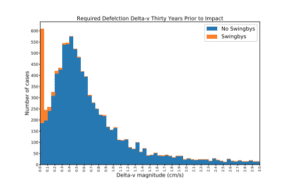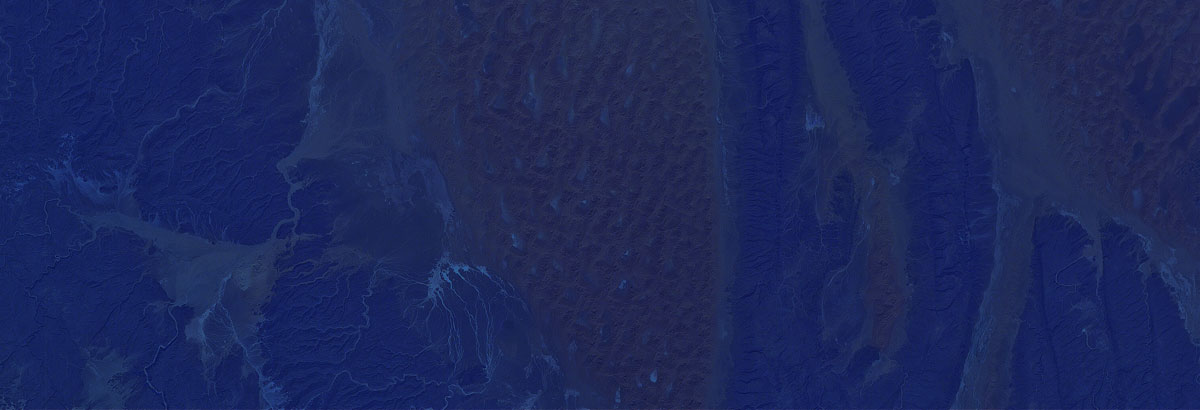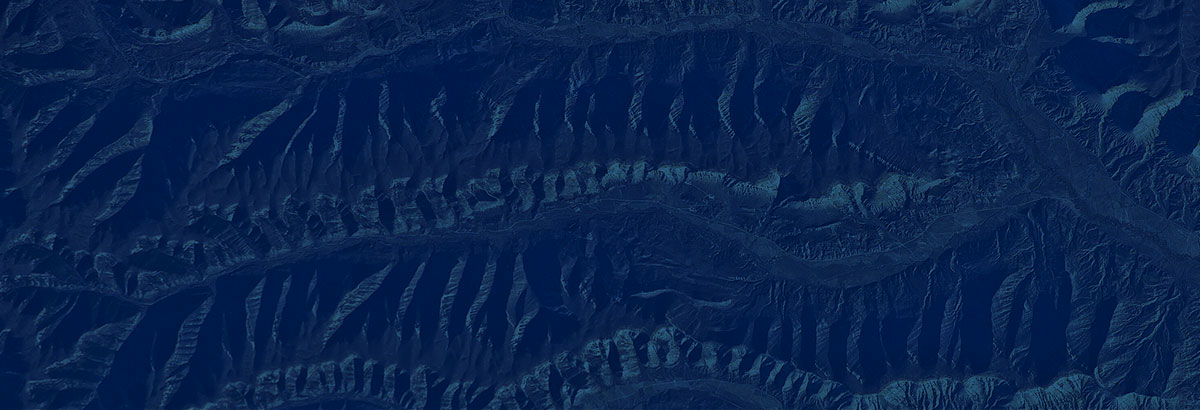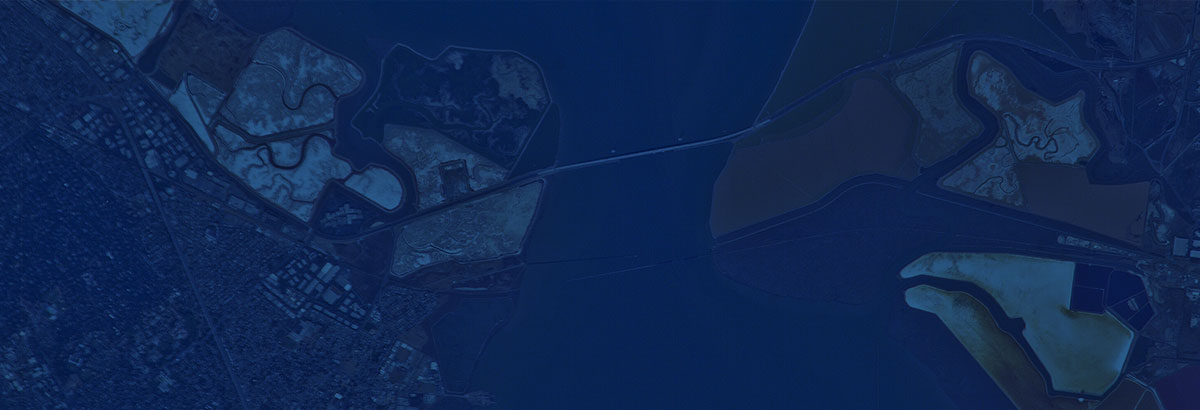Understanding What it Takes to Divert Asteroids, by Dr. Ed Lu
September 24, 2019
Asteroid Institute Senior Researcher Dr. Sarah Greenstreet was the lead author on a recently submitted research paper entitled, “Required Deflection Impulses as a Function of Time Before Impact for Earth-Impacting Asteroids,” with contributors, Mike Loucks, John Carrico, Tatiana Kichkaylo, Mario Juric, and myself. This paper examines the range of difficulty (technically the magnitude of the imparted change in velocity) for deflecting asteroids depending upon how long prior to impact action is taken. We find that there is a considerable spread in difficulty to deflect asteroids, with some requiring an order-of-magnitude more or less deflection impulse than the median. We identified the easy cases as being primarily asteroids with more highly sensitive trajectories due to being affected by an earlier close approach to a planet. Unfortunately, the easiest to deflect asteroids are also the ones that are most difficult to identify as being on an impact trajectory. The more difficult cases, on the other hand, were primarily due to asteroids on an overtaking trajectory with Earth (or vice-versa), much like a rear-end car collision on a highway. From a scientific standpoint, what was significant about this work is that we were able to quantify the actual distributions of deflection difficulty as a function of time before impact.


The practical application of this work is that it helps us better understand the planetary defense requirements for both asteroid tracking as well as asteroid deflection. Knowing the types of orbits that are most difficult to deflect will help us design telescope observing strategies for finding those impacting asteroids earlier in order to be able to deflect them with less difficulty. Conversely, knowing the types of orbits that are the most difficult to identify as threats also will help us design observing strategies to focus more attention on these asteroids. And by better understanding the range of deflection scenarios we are likely to face, we will also better understand not only how much we need to alter asteroid trajectories in order to deflect them, but how long ahead of time we must take action. These results will help us understand the requirements for real-life spacecraft designs to deflect asteroids. Over the next few years, this work will be especially relevant as asteroid deflection tests are carried out.
For instance, the upcoming NASA Double Asteroid Redirection Test (DART) mission will be launched in July 2021 to test out a kinetic impact asteroid deflection by running into a small asteroid and measuring the resultant change in trajectory. For the first time, humanity will intentionally change the orbit of a celestial body! You can follow updates on this exciting mission at the DART homepage. One big unknown in this mission is how much asteroid material will be thrown off in the collision with the DART spacecraft, which affects how much impulse is transmitted to the asteroid. A principal goal of the DART mission and a proposed ESA follow-on mission called HERA is to measure this effect. Once we better understand the real-world effectiveness of kinetic impactors and other asteroid deflection mechanisms, we will be able to use this knowledge together with our understanding of required deflection impulses from Dr. Greenstreet’s paper to better plan for and execute an actual asteroid deflection (which we know we will someday be faced with).
To carry out the work on the Greenstreet et al paper required the simulation of the trajectories of 10 thousand theoretical (or virtual) asteroids whose orbits were chosen to match the distribution of actual Earth impacting asteroids, which required us to build a very fast asteroid orbit propagator. A propagator allows us to calculate the future location of an asteroid based on an initial location and velocity, taking into account the gravity fields of the Sun and planets, as well as other much smaller effects including the gravity of other asteroids, the non-sphericity of the Sun and planets, and even corrections due to the curvature of space-time from Einstein’s General Theory of Relativity! The computational infrastructure we built for this research paper will also become a key building block of the Asteroid Decision and Mapping project.















